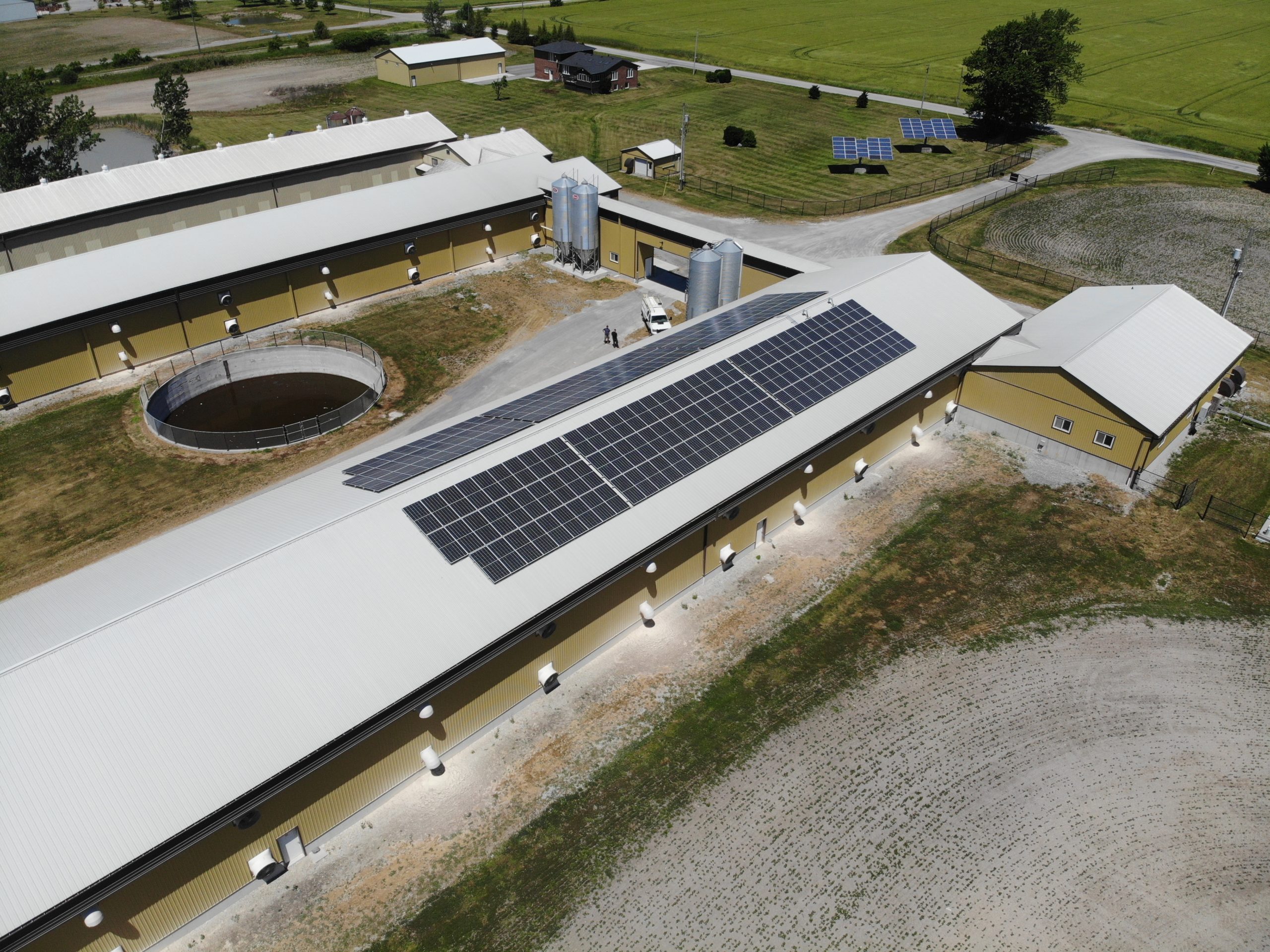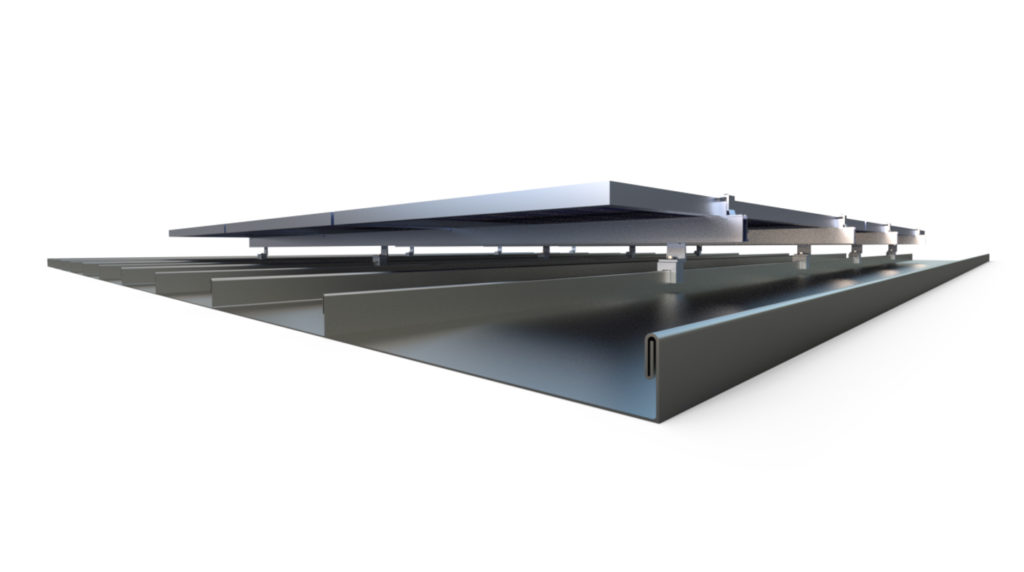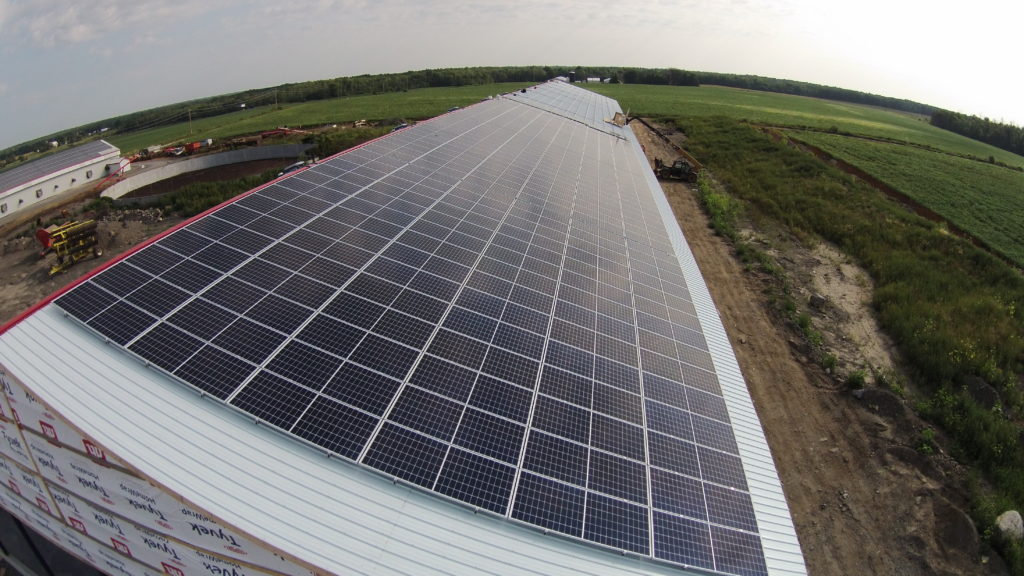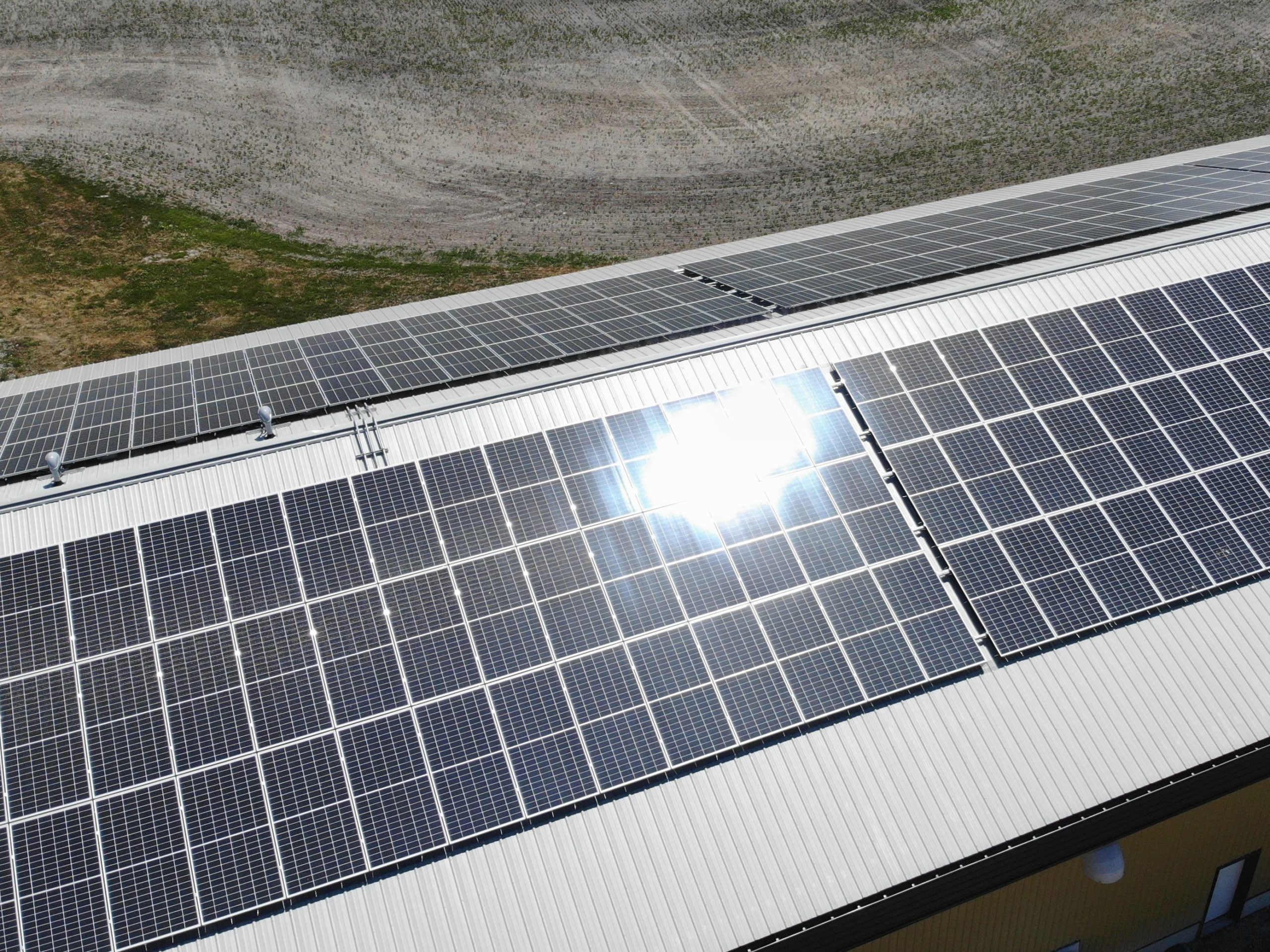
Solar (PV) modules installed onto a sloped roof using flush mount racking have several benefits as well as a few small risks associated with them that are mitigated with proper installation. Overall, the solar modules provide protection to the underlying roof by shading them and physically covering them as well as benefits to the temperature of the building.
A part of every installation is a review of the structure by an engineer and the geographical area that it is installed in. During this process they determine wind loads, snow loads and any other factors that could affect the installation over its lifetime. Sometimes this results in extra reinforcements needing to be added to a building for the increased load on the roof. At the end of the day the racking design, structural and electrical installations are all stamped by Professional Engineer’s to show that it meets the set-out standards.
Solar modules installed on a sloped roof rely on an extruded aluminum racking system that supports the modules and is anchored to the buildings structure using lag bolts through the roof. These lag bolts do introduce a potential leak source, special butyl tape is used to seal these and prevent that from happening. In the case of the typical steel roof installed on a barn there are already thousands of screws through that surface to hold it in place. These mounting methods have been proven over time to be leak free and reliable.

The sections of a roof with solar modules installed on them are actually protected by the panels themselves. The array installed provides cover for the roof below from normal weather, storms and UV light that deteriorates a roof over time. The modules themselves have been designed and tested against hail damage, wind forces, rain, ice and snow. They are built with special tempered glass to improve their strength and flexibility to handle the forces exerted on them when installed. All of these conditions would normally take their toll on the roof but with the PV modules installed they are protected below them extending the lifespan of the roof.

The solar array also acts as an extra insulation barrier above the roof helping to keep temperatures within the building lower than they would be without the system. The solar modules absorb the heat from the sun throughout the day as they produce power shading the roof below them. As the modules are mounted around 6” to 10” above the actual roof this provides an air gap between the two allowing some air circulation to happen taking away the heat built up between them. During the day this results in a cooling effect, but at night reduces the amount of heat lost through the roof. This effect was studied by a team of researchers at the University of California San Diego. They found that this led to a reduction of the annual cooling load on the building they studied by 38% for the section of roof covered by PV modules over the uncovered sections. They also found the daily variability in rooftop surface temperature under the PV array was half that of the exposed roof, indicating a reduction in thermal stresses of the roof structure. The strength of these effects are dependant on the type of roof installed and how the panels are installed on them, the larger the gap between the panels and the roof the more benefit there is. However this does show that even if the effect is minimal it is still beneficial to the roof below the PV modules and temperatures in the attic.

If you’re thinking about a solar project, contact Ruby360 today. We are happy to answer any questions you may have and bring clarity to your future project.
References: Solar Panels Keep Buildings Cool, UC San Diego Jacobs School of Engineering, 11 July 2011, https://jacobsschool.ucsd.edu/news/release/1094.